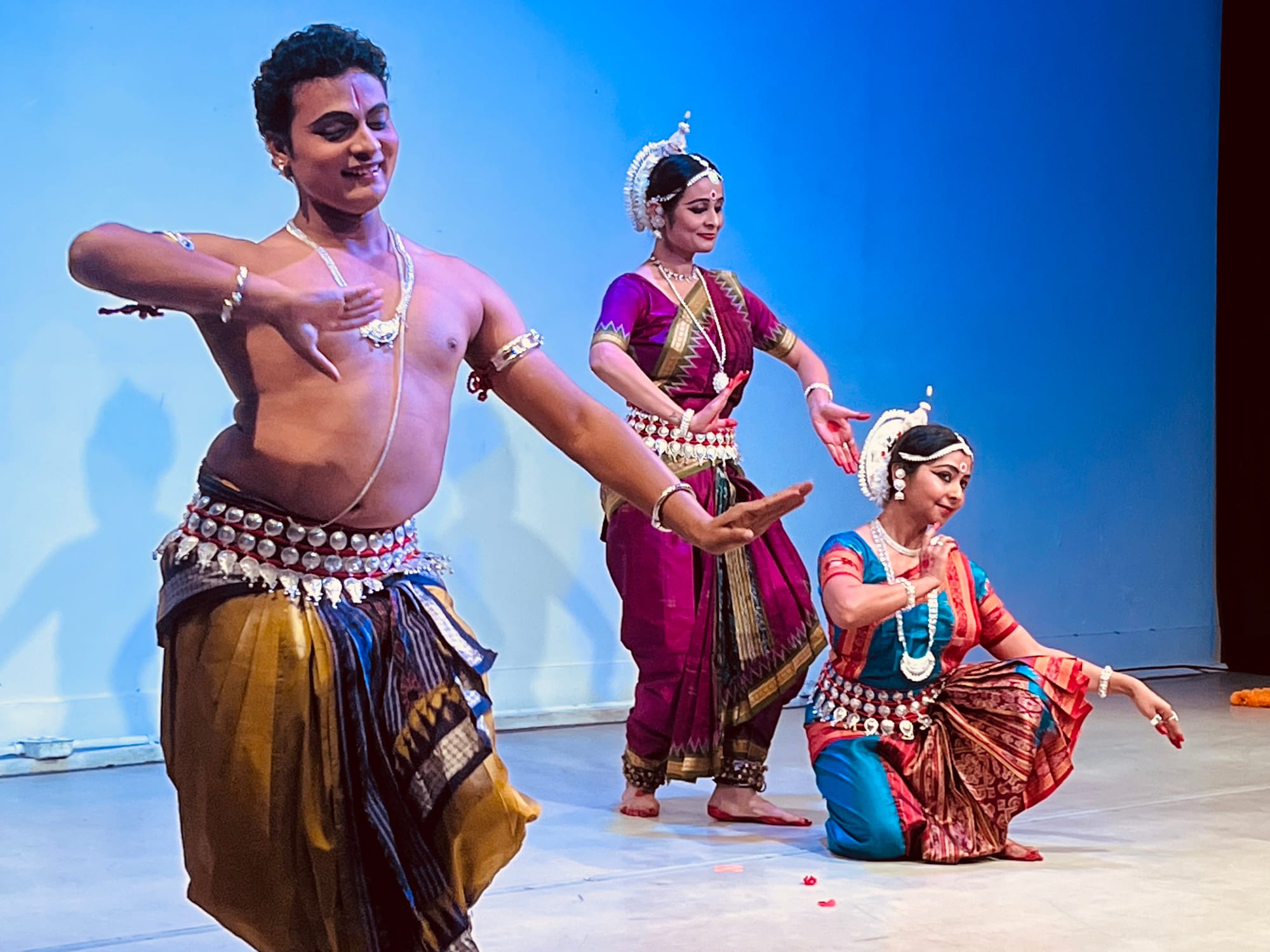"Sangam: A Diwali Odissi Recital"
Dresher Ensemble Studio
Odissi Vilas Dance Ensemble
Rudrakshya Foundation
2201 Poplar St., Oakland
Nov. 1, 2024
On Friday I was able to celebrate a double whammy of autumn holidays in one day. For many, November 1st is All Saints Day, when all the saints are honored, revered, and appealed to. This year it is also the date on which the Hindu observance of Diwali begins, a festival in which light triumphs over darkness, knowledge over ignorance. And so it’s apt that on this twin holiday the Sanskrit word Sangam means “confluence of rivers,” or “coming together." "Sangam: A Diwali Odissi Recital," performed at the Dresher Ensemble Studio in west Oakland, made the day a twofer of a fête. And it left me in sweet spirits not only spiritually, but also gustatorily.
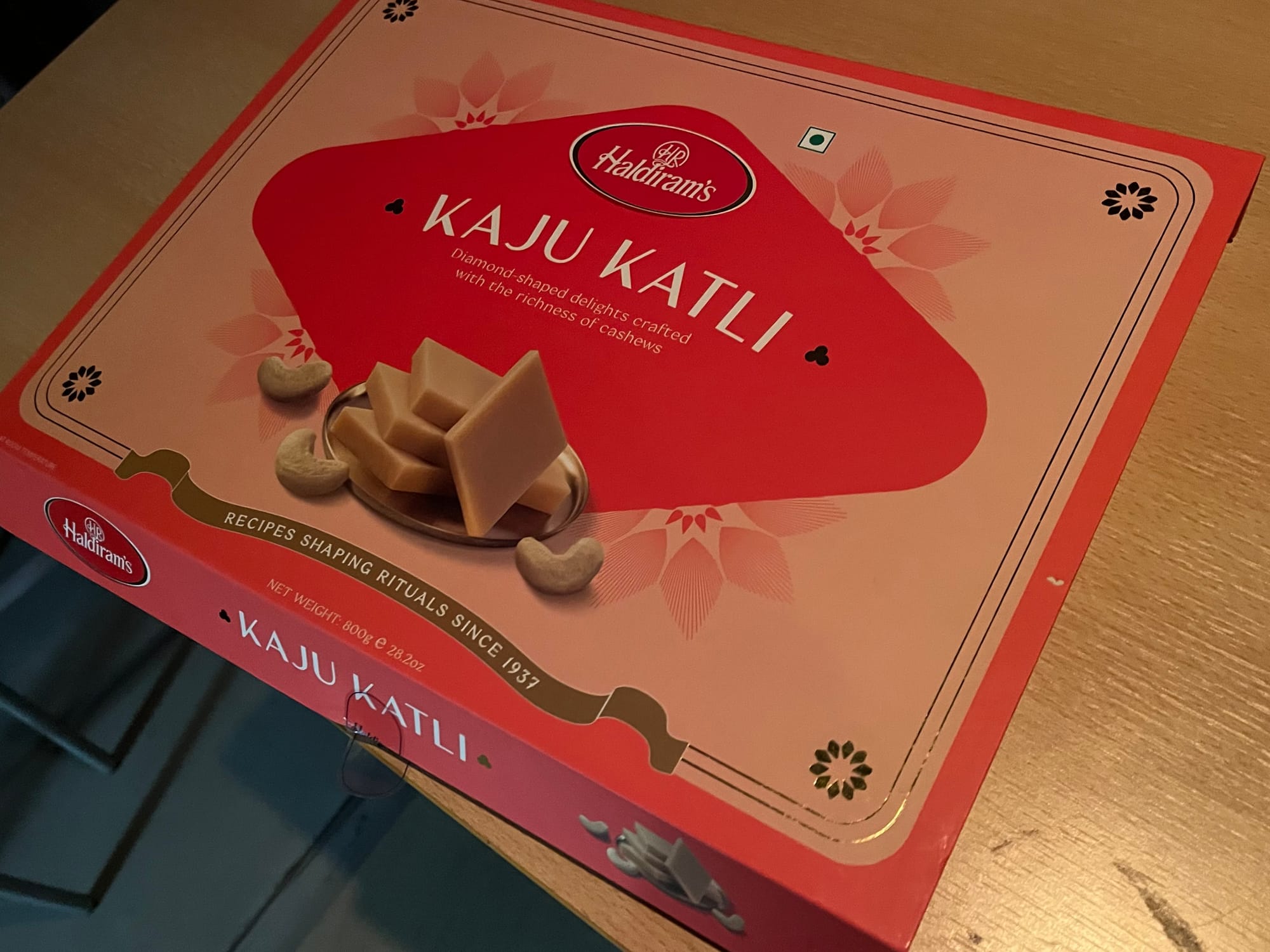
My partner and I got to eat delicious kaju katli, a cashew paste confection similar to almond-based marzipan traditionally eaten on Diwali. Cute little kids offered them to the audience before the show, holding big boxes of the diamond-shaped candies as they wished everyone a happy Diwali.
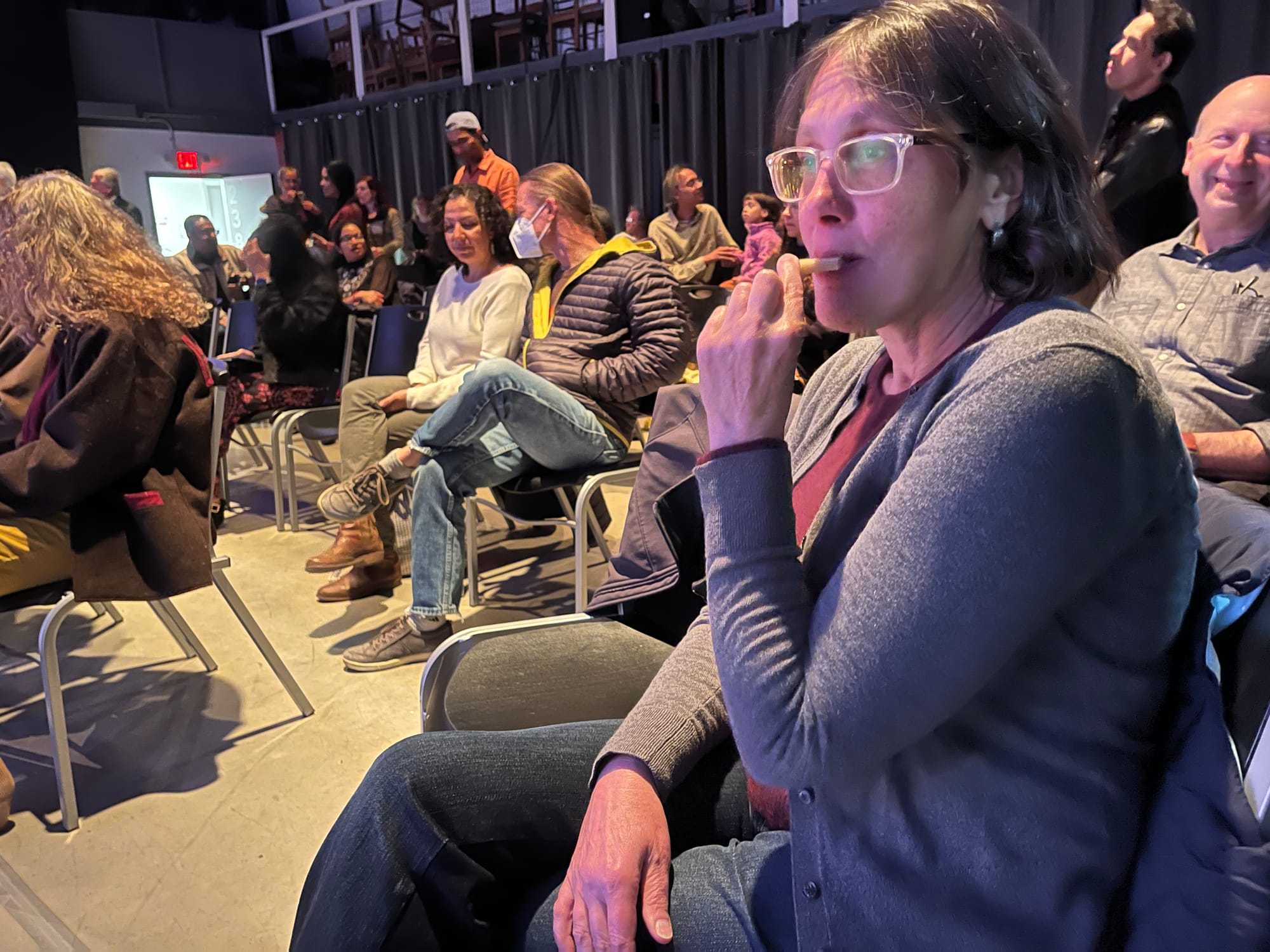
The Dresher Ensemble Studio is intimate yet not small, a space where a wide variety of musical and other live performances are held. It’s overseen by Paul Dresher, a contemporary composer. His work includes experimental opera, music theater, chamber and orchestral composition, live instrumental electro-acoustic music, and scores for theater and dance.

The evening’s featured dance, Odissi, is an age-old form, dating back to the 1st and 2nd centuries BCE. Although it’s no longer strictly a dance performed for temple worship, Odissi remains a devotional style of dance that utilizes postures which portray different deities, and involves intricate torso movements, hand gestures, facial expressions, and elaborate footwork that tell various stories from ancient texts.
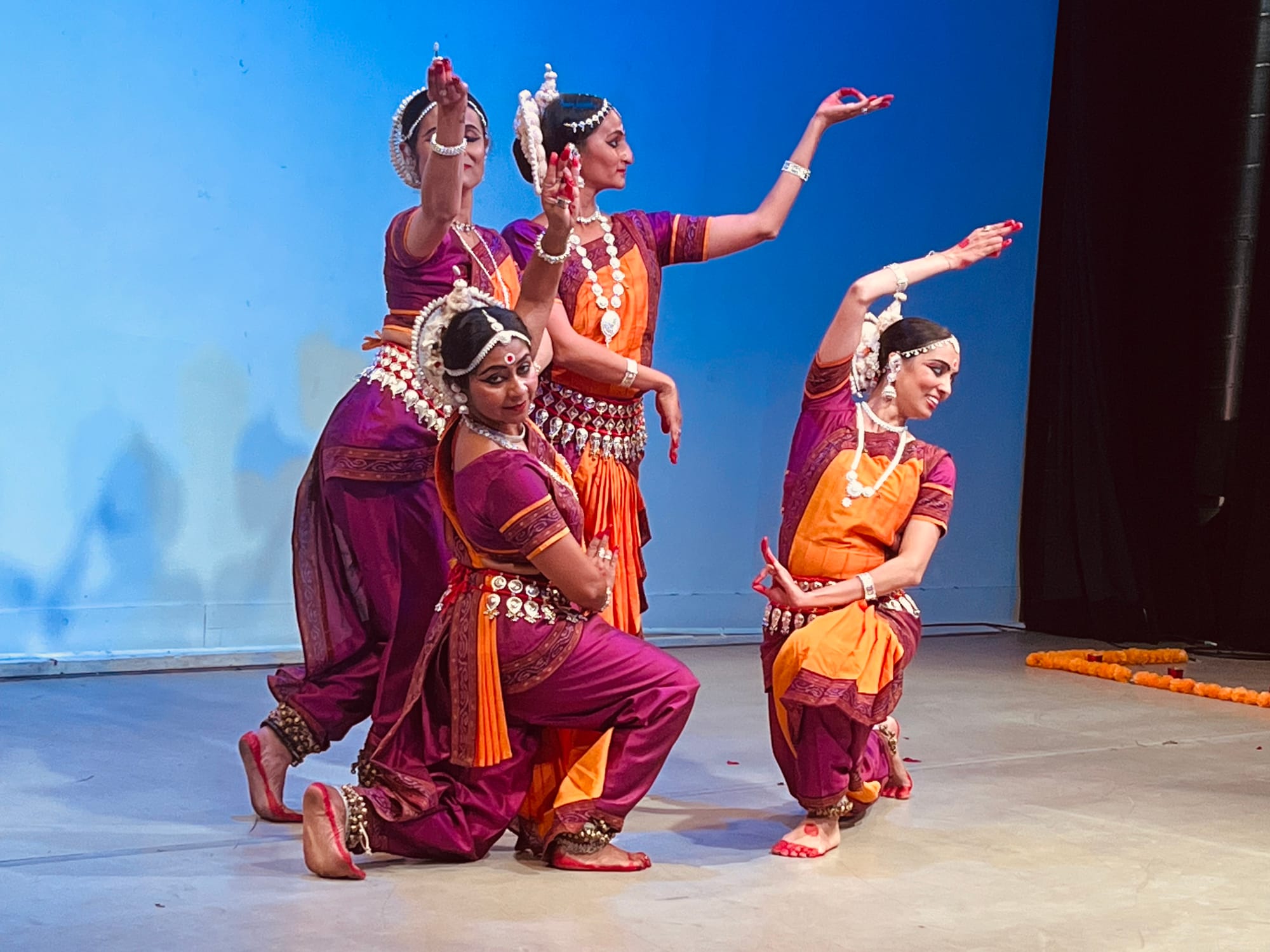
After we ate a few too many kaju katli (irresistibly yummy), the performance began with dancers from Odissi Vilas Dance Ensemble, based in Fresno; and two visiting dancers from Orissa, India, prostrating before a small, fire-lit shrine beside the stage.
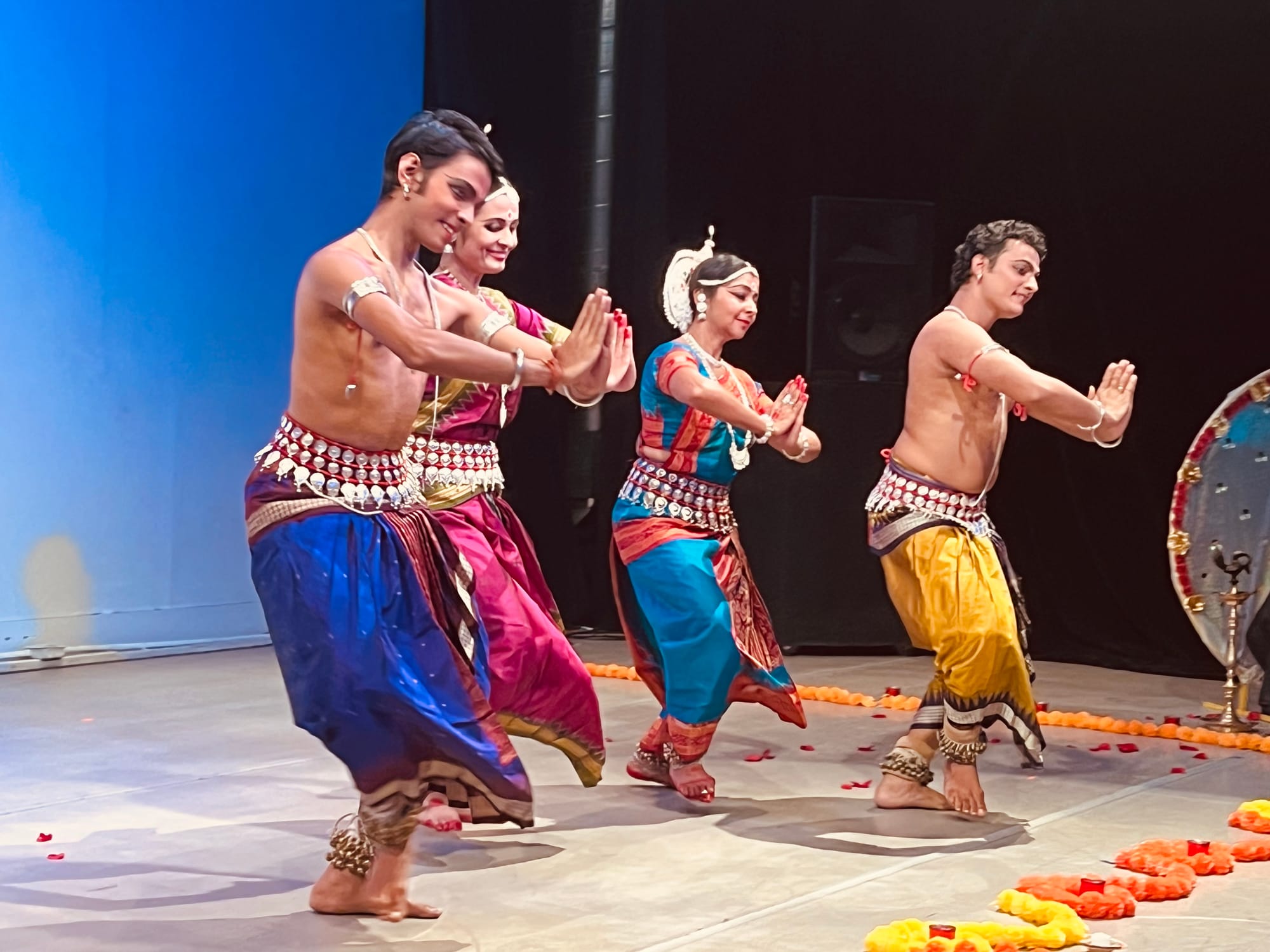
The first dance, Manikyaveena, was a Mangalacharan, which is the opening dance item in the Odissi repertoire. It involved Manasi Madhusmita Padhi and Maureen Nandini Mitra of Odissi Vilas; and Samir Panigrahi and Santosh Ram from the Rudrakshya Foundation. The dance invokes the mother goddess Matangi through movement in parallel to a sung verse written by fourth-century poet Kalidas. I was surprised by its rather subdued rendering. Or perhaps that’s why it’s a prelude? But what followed was fantastic.

The other dances, Ananda Bhairavi Pallavi, Rageshree, Bhavani Bhujanga, and the finale, Moksha, were definitively much more engaging than the first, due in no small part to Ram and Panigrahi. They performed as a duo for all but Rageshree. Their expert movements held us captive, especially their precise foot movements and animated-yet-proscribed facial expressions. Theirs was a luminous precision. The pair were excellent: their red-painted feet fleet and supple to the ragas they brought into human form, their ankles spangled in tiny bells that chimed in rhythm to the classical music. They danced like the professionals they so obviously are.
Bhavani Bhujanga
My favorite was Bhavani Bhujanga which is based on a verse in praise of the beauty of goddess Bhavani, the “giver of life,” a form of the goddess Parvati. It portrays a seeker who surrenders to Bhavani and the transformative power of deep meditation that awakens their kundalini shakti, the primordial cosmic energy that resides in all of us, where the the feminine and masculine energies are in perfect balance. Panigrahi and Ram were spectacular, their subtle movements exquisitely coordinated with one another. We were transfixed.
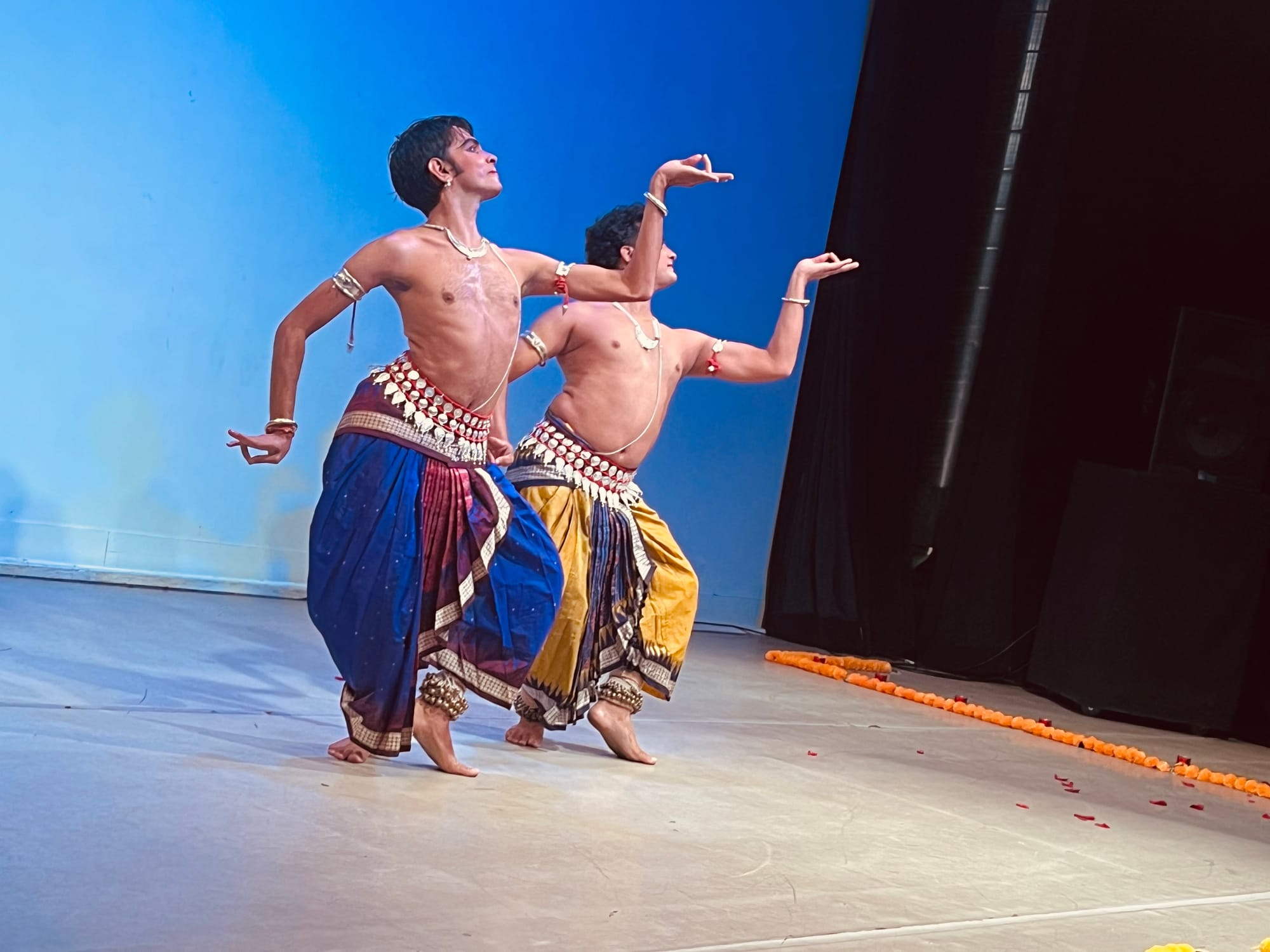
I’m a fan of classical Indian music (e.g. Sulochana Brahaspati) and the dances that accompanied the beautiful ragas we witnessed gave me a greater appreciation for what liturgical art can accomplish when bodily movement is part of the whole. Truly, the music, colors, and kinetics were part and parcel of one another.
Music, colors, and kinetics.
After the performance I asked to go backstage to chat with the dancers. I spoke mainly with the sweat-soaked and exhausted-looking Ram and Panigrahi. Samir Panigrahi, who is 29, began dancing at age 9; Santosh Ram who’s 30, at age 15. They both study under the guidance of their guru, Bichitrananda Swain who is director of the Rudrakshya Foundation. The two are now in residence with Odissi Vilas after performing in New York City in September at the Erasing Borders Festival, a prestigious Indian dance festival. The other dancers—Maureen Nandini Mitra, Manasi Padhi, Aparna Krishnamoorthy, and Gireeja Ranade—were warm and welcoming and I had a lovely time talking with them.
Next year Diwali falls on Oct. 20th, so there won’t be a double holiday for me in 2025. But I plan to attend a Diwali celebration again, hopefully one involving dance. And I want some more delectable kaju katli!

